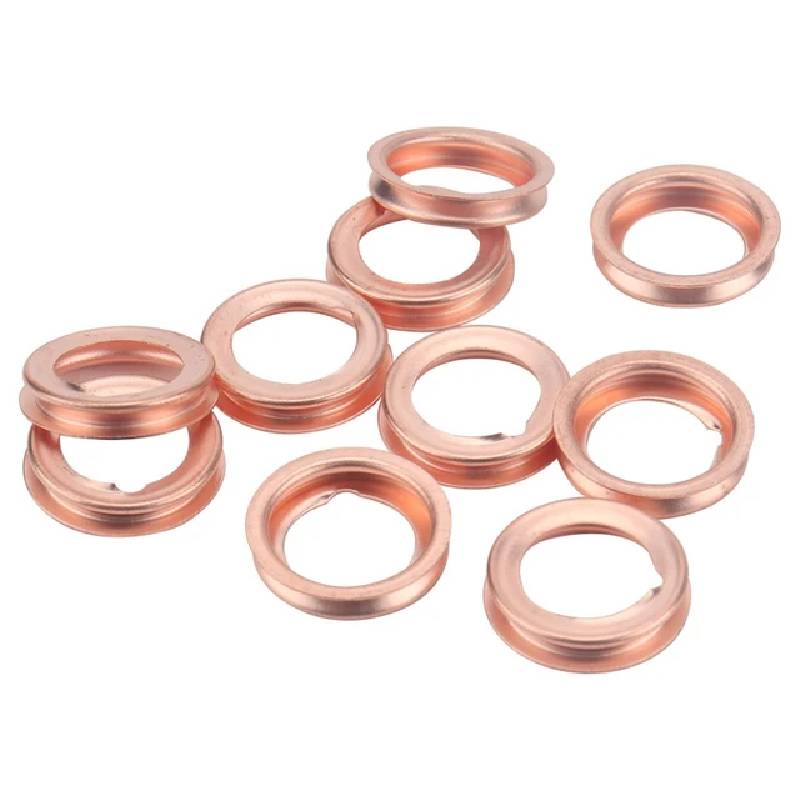Replacing the Crankshaft Seal for Optimal Engine Performance and Reliability
Crankshaft Seal Replacement A Comprehensive Guide
The crankshaft seal plays a vital role in the overall functionality of an engine. This small yet crucial component is designed to prevent oil leakage from the engine block, protecting internal parts and maintaining optimal performance. Over time, crankshaft seals can wear out due to heat, pressure, and age, leading to oil leaks and potential engine damage. If you're noticing oil pooling under your vehicle or a drop in oil levels, it may be time for a crankshaft seal replacement. In this article, we’ll outline the steps involved in the replacement process, the signs of a failing seal, and why it’s essential to address this issue promptly.
Symptoms of a Failing Crankshaft Seal
Before diving into the replacement process, it’s essential to recognize the signs that indicate a failing crankshaft seal. Common symptoms include
1. Oil Leaks The most apparent symptom of a failing crankshaft seal is the presence of oil leaks. Check the area around the crankshaft and under the vehicle for pools of oil.
2. Engine Performance Issues A failing seal can lead to decreased engine performance. If you notice a drop in power or unusual noises from the engine, this could indicate a problem.
3. Oil Pressure Warning Light If your vehicle's oil pressure warning light comes on, it could be due to a leaky crankshaft seal causing low oil levels.
Tools and Materials Needed
Before starting the replacement process, gather the necessary tools and materials. You will need
- New crankshaft seal - Socket set and wrenches - Screwdrivers - Pliers - Oil drain pan - Engine oil - Gasket maker or RTV silicone (if necessary) - Clean rags - Torque wrench
crankshaft seal replacement

Step-by-Step Replacement Process
1. Preparation Begin by parking the vehicle on a flat surface and ensure the engine is cool. Disconnect the negative battery cable to prevent any electrical issues.
2. Drain Engine Oil Place an oil drain pan under the engine and drain the oil by removing the oil drain plug. This step is crucial as it reduces the mess during the seal replacement.
3. Remove Necessary Components Depending on your vehicle's design, you may need to remove components such as the harmonic balancer, timing belt/chain, and other parts obstructing access to the crankshaft seal. Keep track of the bolts and components you remove.
4. Remove the Old Seal Carefully pry out the old crankshaft seal using a seal puller or a flat-head screwdriver. Be cautious not to damage the crankshaft or surrounding areas.
5. Install the New Seal Before installation, lubricate the new seal with a bit of engine oil. Carefully press the new seal into place, ensuring it sits evenly. Use a seal driver tool to ensure it is seated properly.
6. Reassemble Reattach any components you removed earlier, following a reverse order of how they were taken off. Ensure all bolts are tightened according to the manufacturer’s specifications using a torque wrench.
7. Refill Engine Oil Replace the oil drain plug and refill the engine with the appropriate amount and type of oil as specified in your owner's manual.
8. Reconnect the Battery and Test Reconnect the negative battery cable and start the engine. Check for any leaks around the new crankshaft seal and make sure the engine runs smoothly.
Conclusion
Replacing a crankshaft seal may seem daunting, but with the right tools and careful attention to detail, it can be a manageable task for those with basic mechanical skills. Timely replacement not only prevents oil leaks but also safeguards your engine from potential damage caused by oil contamination. If you're uncomfortable performing the replacement yourself or if you're unsure about any part of the process, don’t hesitate to consult with a professional mechanic. Regular maintenance and prompt repairs are key to ensuring your vehicle remains in excellent condition for years to come.
-
The Ultimate Guide to Boat Propeller Bearings and Trailer Wheel Bearings
News Jul.31,2025
-
The Essential Guide to Marine Bearings and Boat Trailer Wheel Bearings
News Jul.31,2025
-
The Complete Guide to Heavy Duty Seals: Protecting Doors and Spaces Efficiently
News Jul.31,2025
-
Essential Guide to Marine Shaft Bearings and Boat Trailer Axle Bearings
News Jul.31,2025
-
Comprehensive Guide to Marine and Trailer Bearings for Safe Boating and Transport
News Jul.31,2025
-
Comprehensive Guide to Automotive Oil Seals: Protecting Your Engine and Shafts
News Jul.31,2025
-
Understanding Automotive Oil Seals: Essential Components for Engine and Shaft Protection
News Jul.30,2025
Products categories















